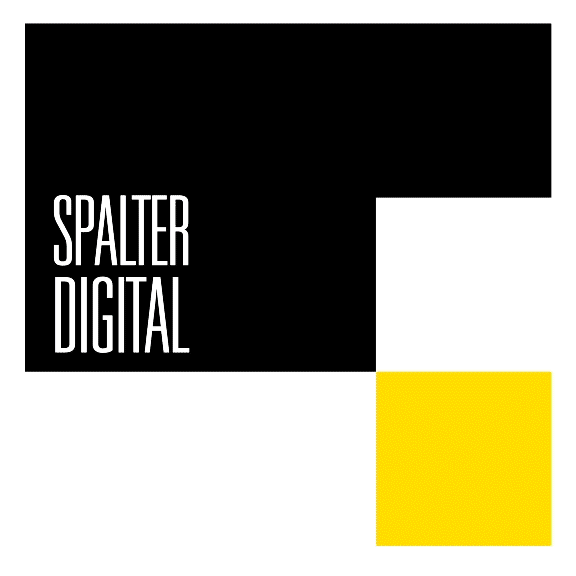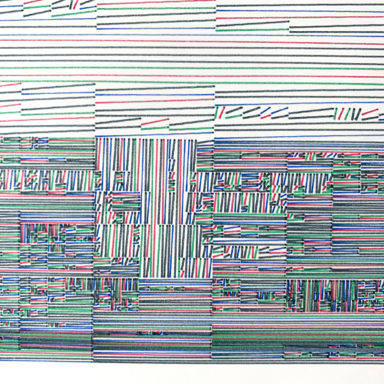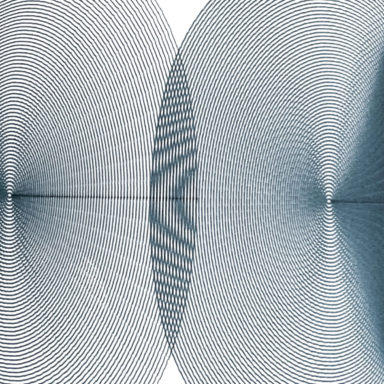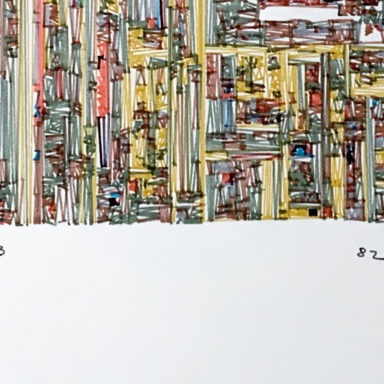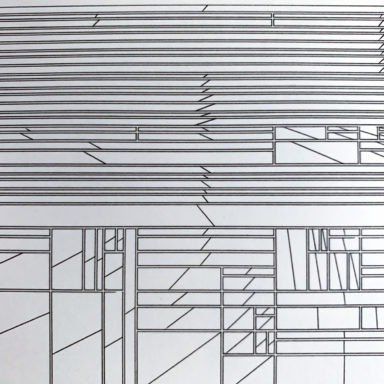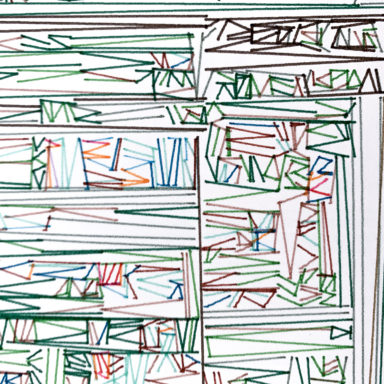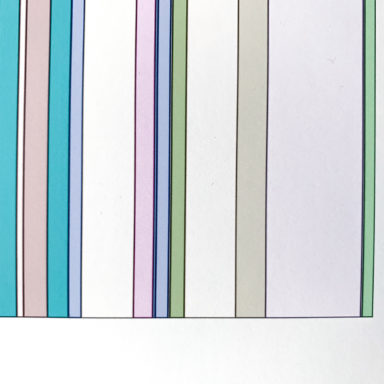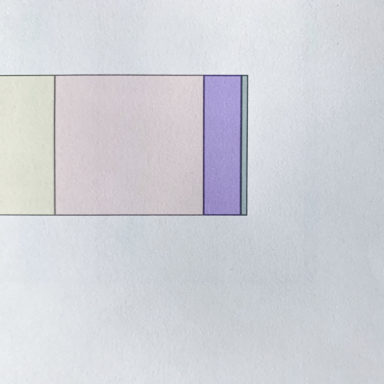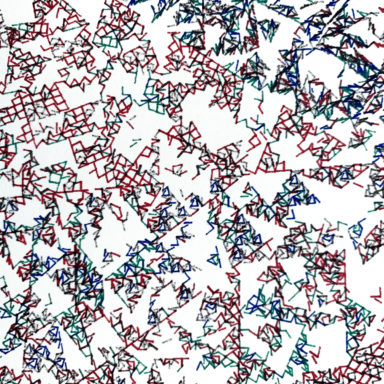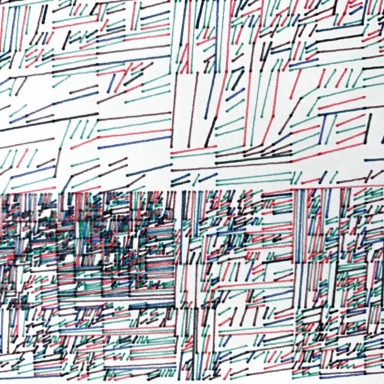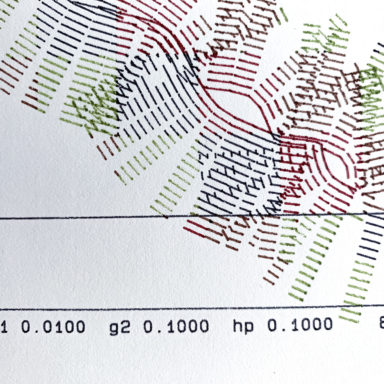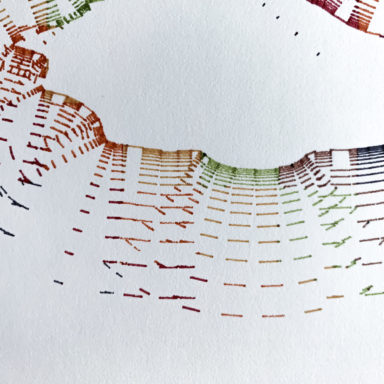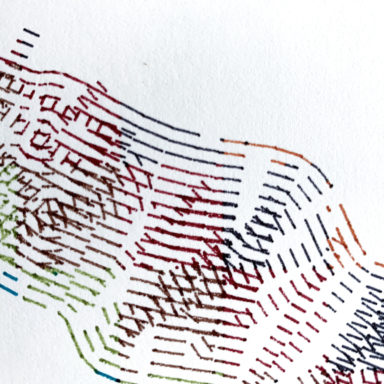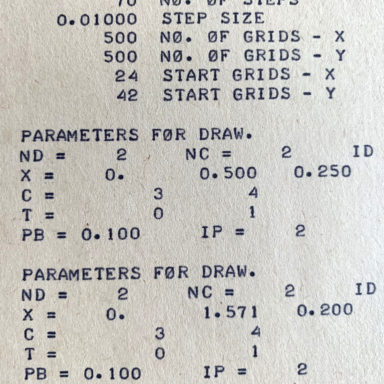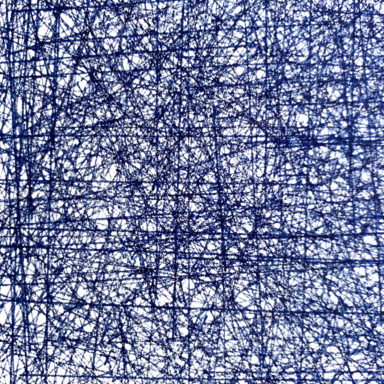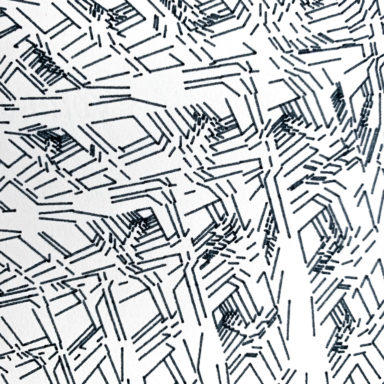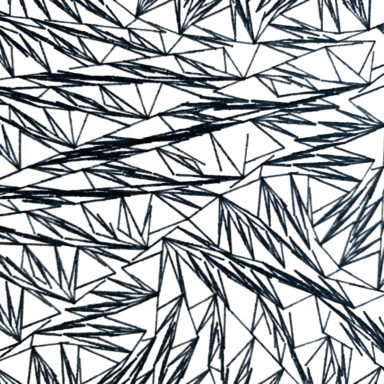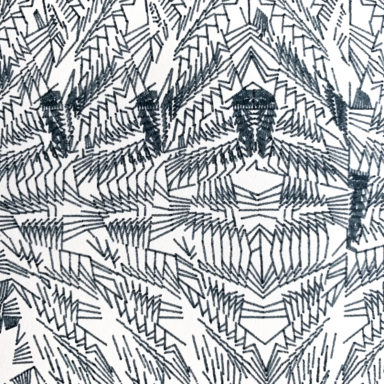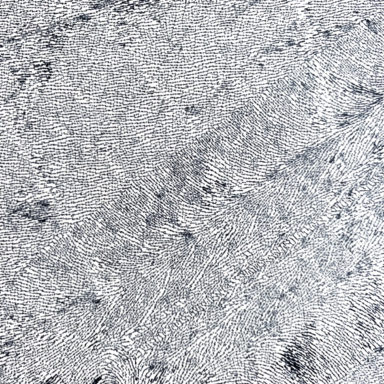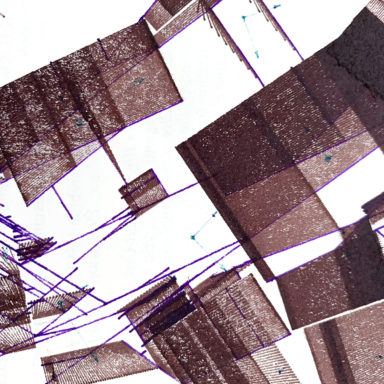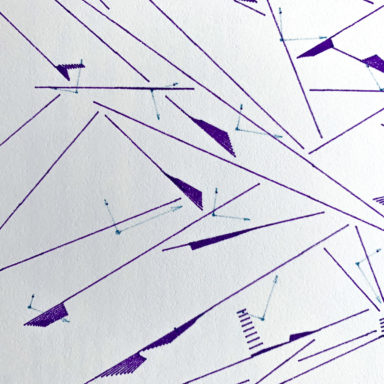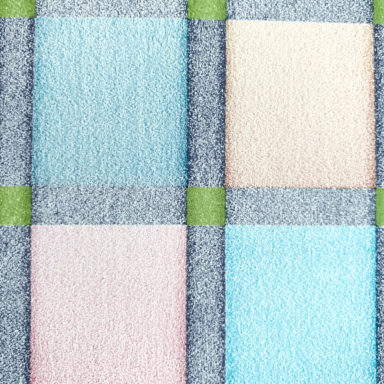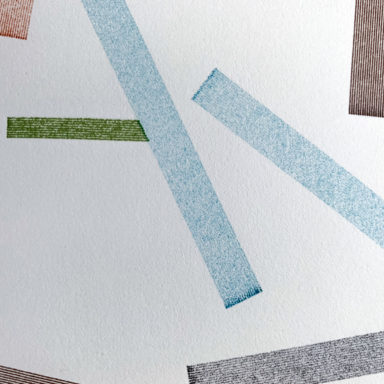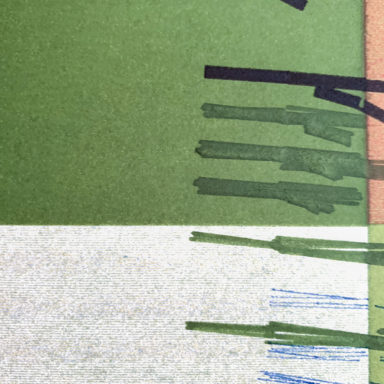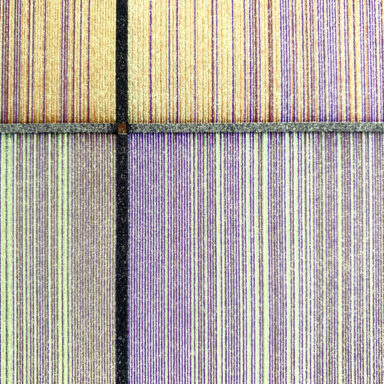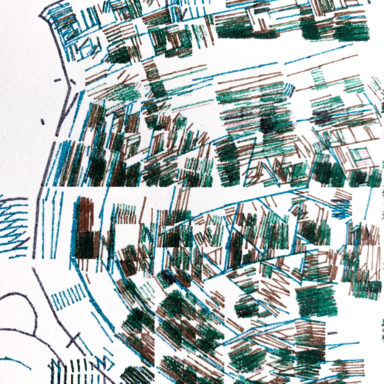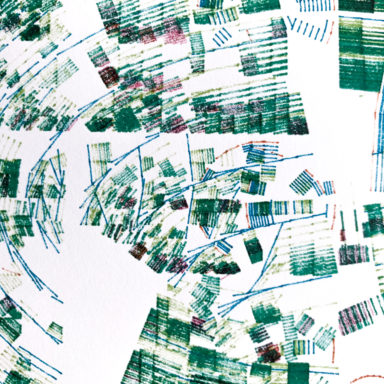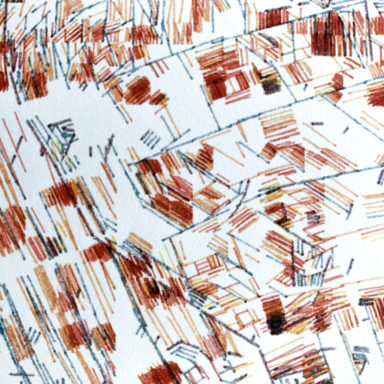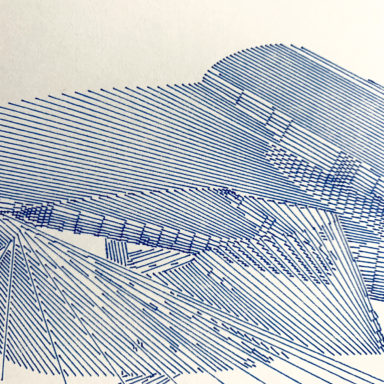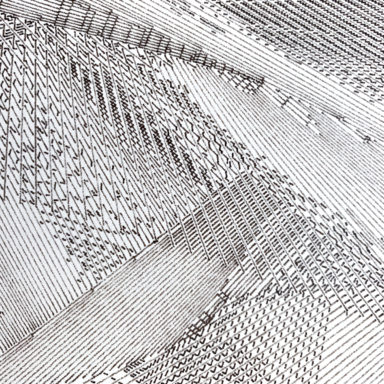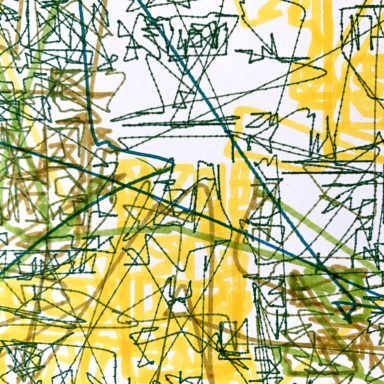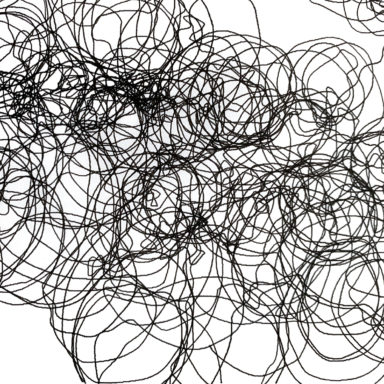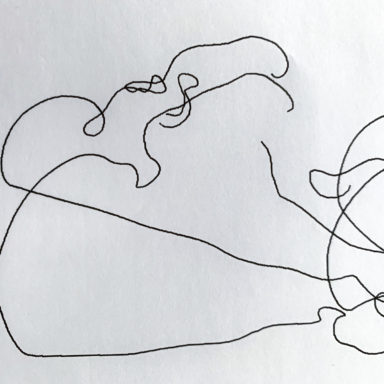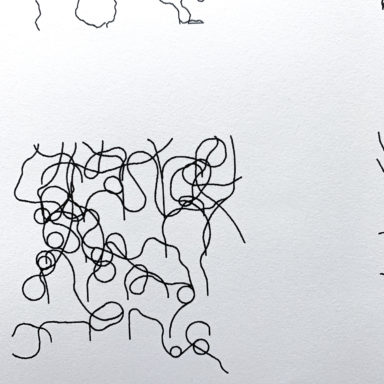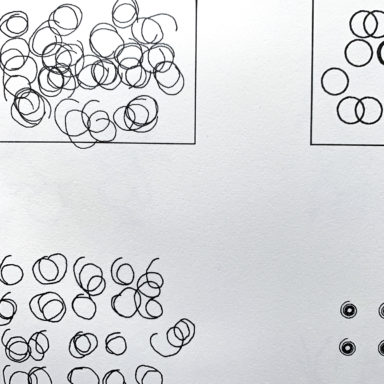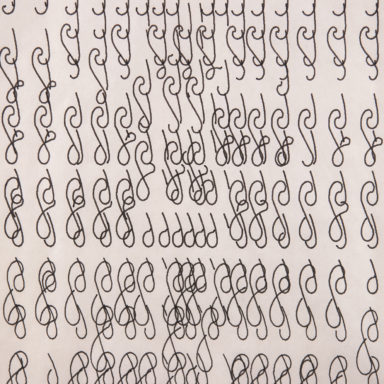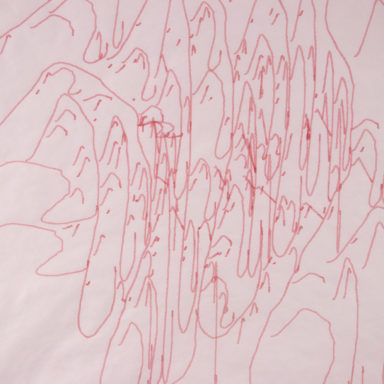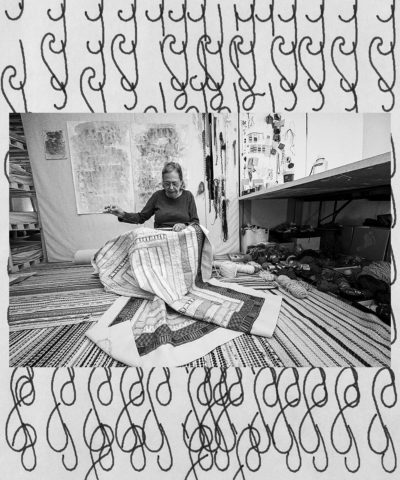
Basic Info
Name: Colette and Charles J. Bangert
Country of Origin: US
Website: http://www.fromheretofaraway.com/
Description
Colette and Charles J. Bangert (commonly known as Jeffery) are well-known for their works of algorithmic art, which they produced as a couple. Colette was trained as an artist, while her husband studied mathematics, and later, computer science and programming; the two combined their skills to join the ranks of early innovators within the field.
The Bangerts were married in 1959. Charles Bangert was employed at the University of Kansas, and when the university was given a plotter in 1967, he was asked to test it. Working together, the couple began to experiment graphically with the machine, producing line drawings and signing them CB (Colette-Charles Bangert). The works they produced draw inspiration from landscapes and the natural environment, featuring repetitive patterns with slight variations reminiscent of leaves, trees, grass and other elements spreading across the paper; out of the expanses of repetition spring patterns. As Colette wrote, “A field has no center, and is not really flat, so I use no flat areas. The form of grass as grass, leaves as leaves, is what I’m exploring…Line as form. Grass as form. Grass is also random and random is a natural computer facility. Computer grass is natural grass.”
As the so-called “renaissance” of computer art began in the 1970s, artists and critics became more optimistic about the medium and its ability to unite scientific and cultural learning in order to break out of a normative paradigm; the Bangerts were a part of this movement, and the couple saw the computer as ushering in a new “visual age”. Computers could help by offering new ideas and enriching artistic practice; using a computer and plotter could extend the artist’s physical body to enable production of new and interesting designs. At the same time, as Colette wrote, “without conscious understanding of what a drawing is we could not use the computer as a drawing medium…We ask this new medium questions and get new (and old) answers. But some of the answers were there from the beginning…” The Bangerts’ work thus explores the act of creation, regardless of medium, by utilizing the computer to push the boundaries of praxis.
Colette has continued to create, even after the death of her husband, though in recent years she mostly works in fiber and watercolor. They have an international following, and their work is in collections such as the Victoria and Albert Museum and the Spencer Museum of Art on the campus of the University of Kansas.
